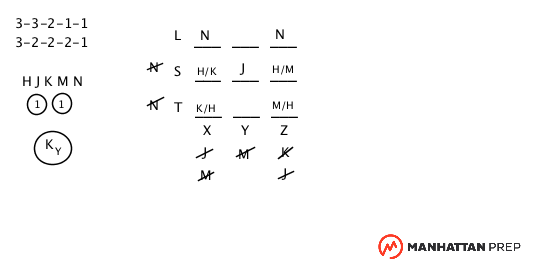by Misti Duvall Wed Nov 11, 2020 8:10 pm
Sure! The key to the inferences in this game is the antis (who can't go in which group). The third rule tells us that K can't be assigned to group Z, and the fourth rule that J can't be assigned to X or Z.
So we have two elements (K and J) that can't go in group Z. But we only have five elements in total, and three spots to fill in group Z. If K and J are out, that leaves only H, M, and N to go in group Z.
And since the second rules says M can only go in one group, and that's going to have to be group Z, M can't go in group X or group Y. Now group X is pretty limited, since J and M can't go there. Meaning only H, K, and N are available for group X. And, since M can't be in Y, only J, K, and H/N are available for group Y.
This game has a small number of elements (only 5), and 3 spots per group. When that's the case, usually that means the antis are going to be pretty important, since there isn't a lot of wiggle room for each group.
LSAT Instructor | Manhattan Prep







